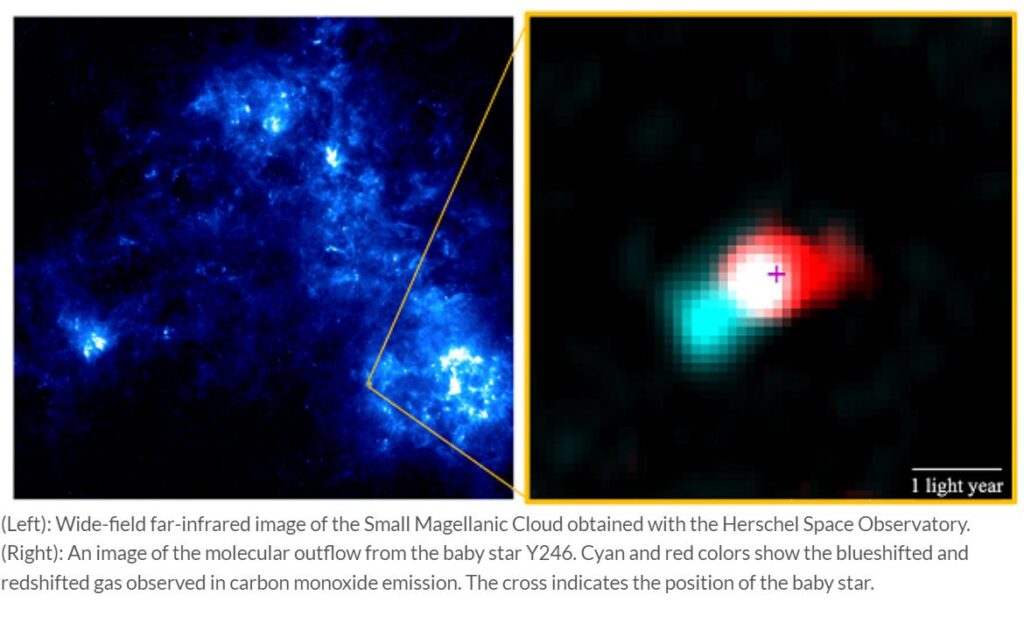
Researchers at Osaka Metropolitan University have observed “baby stars” in the Small Magellanic Cloud, having an environment similar to the early universe. Toward one of the baby stars, they found molecular outflow, which has similar properties to those seen in the Milky Way galaxy, giving a new perspective on the birth of stars.
The heavy elements in interstellar matter significantly impact the mechanism of star formation. In the early universe, the abundance of heavy elements was lower than in the present universe because there was not enough time for nucleosynthesis to produce heavy elements in stars. It has not been well understood how star formation in such an environment differs from present-day star formation.
An international team led by Professor Toshikazu Onishi, Osaka Metropolitan University, and Project Assistant Professor Kazuki Tokuda, Kyushu University/NAOJ, used the Atacama Large Millimeter/submillimeter Array (ALMA) to observe high-mass young stellar objects in the Small Magellanic Cloud.
The Small Magellanic Cloud is characterized by a low abundance of elements heavier than helium, similar to the galaxies 10 billion years ago. The target provides a detailed observational view thanks to the relatively close distance from Earth. In this study, researchers detected a bipolar gas stream flowing out of the “baby star” Y246 and determined that the molecular flow has a velocity of more than 54,000 km/h in both directions.
In the present universe, growing “baby stars” are thought to have their rotational motion suppressed by this molecular outflow during gravitational contraction, accelerating the star growth. The discovery of the same phenomenon in the Small Magellanic Cloud suggests that this process of star formation has been common throughout the past 10 billion years. The team also expects this discovery to bring new perspectives to studying stars and planet formation. https://www.upc-osaka.ac.jp/new-univ/en-research/news/220830/








Recent Comments